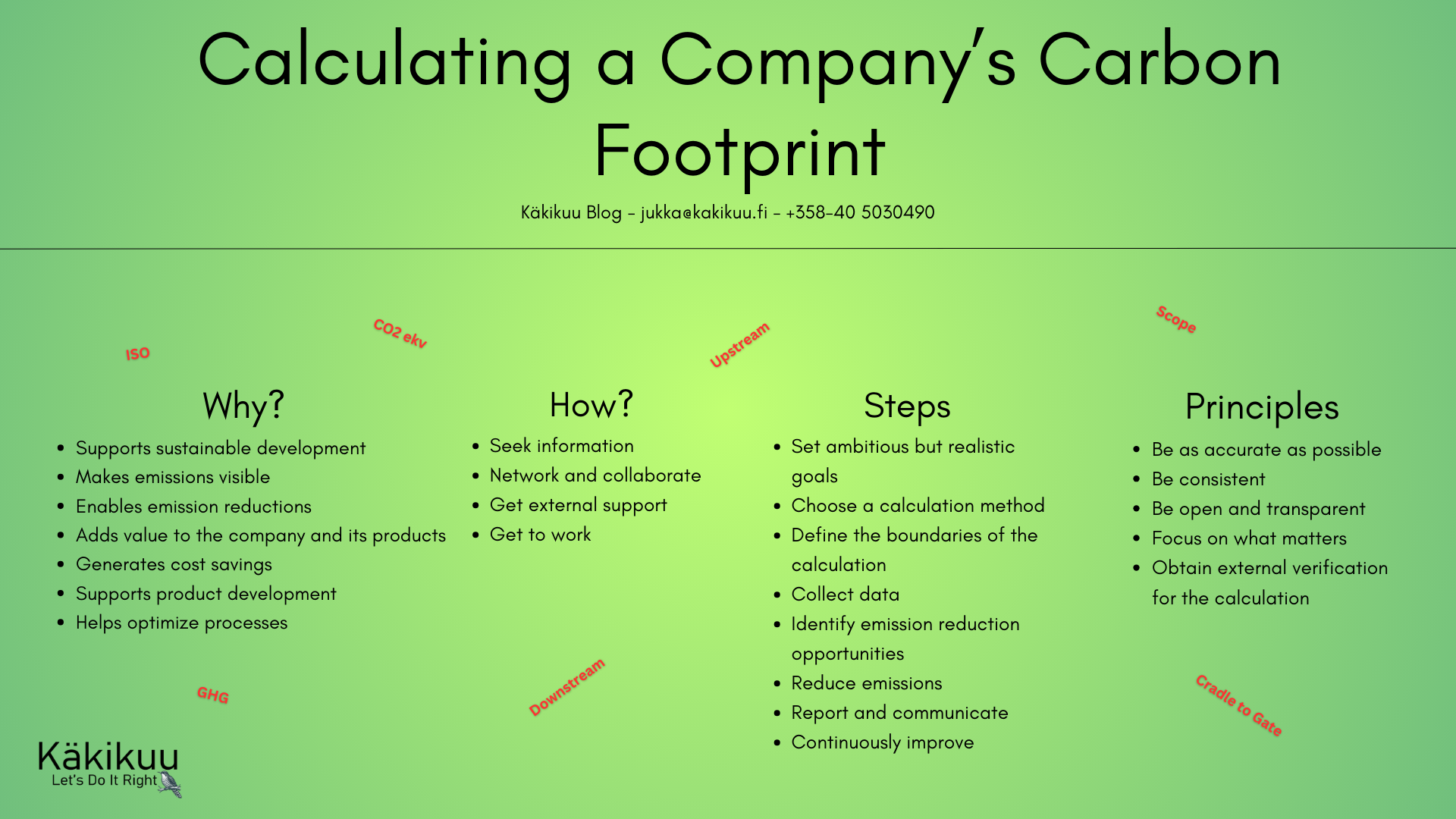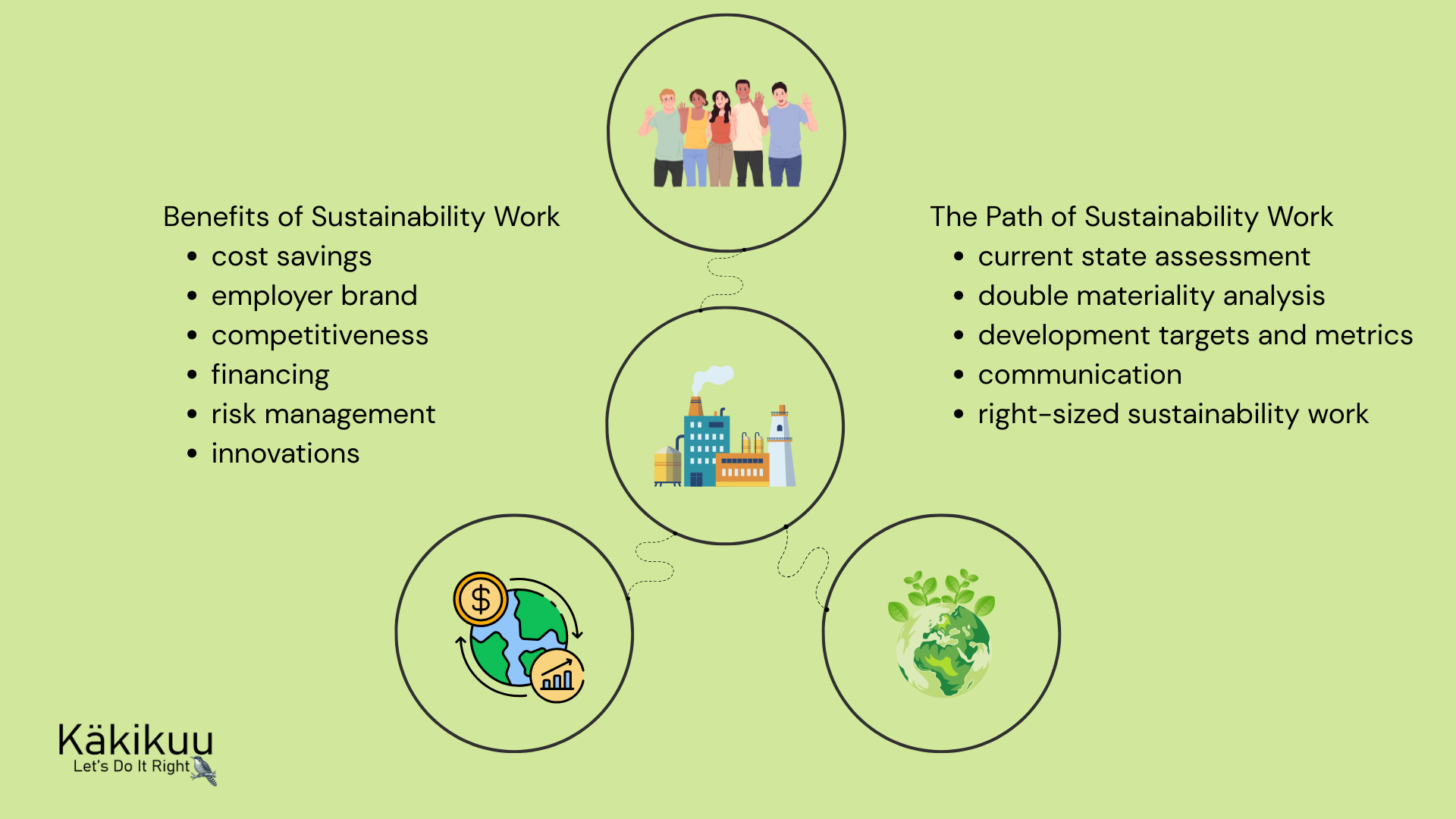The concept of a carbon footprint has become familiar to most people and companies. A carbon footprint represents the climate impact of a person, business, or individual product, calculated by summing all greenhouse gas emissions generated throughout its life cycle and converting them into carbon dioxide equivalents (CO2eqv). For example, methane is significantly more harmful to the climate than carbon dioxide, so its effect on global warming is standardized into CO₂ equivalents by using a specific multiplier that reflects its relative impact. This same approach is applied to all greenhouse gases to ensure comparability.
Why should a company assess the carbon footprint of its operations or products? Calculating the carbon footprint makes the company’s emissions visible and provides a solid foundation for reducing them as cost-effectively as possible. When a company understands where and how its emissions are generated, it can allocate resources to areas where reduction measures will have the greatest impact. Optimizing processes and improving resource efficiency also lead directly to cost savings.
Consumers increasingly expect companies to provide transparent and comparable information about their sustainability and carbon footprint. According to a study by the Finnish Commerce Federation, around 70 percent of Finnish consumers are willing to pay more for sustainable products. Companies can meet the expectations of customers, employees, and other stakeholders through active sustainability work, corporate responsibility reporting, and effective communication. Calculating the carbon footprint provides the foundation for all of this. At the same time, it creates significant added value for the company and its products. This applies to all companies—not just those currently subject to corporate sustainability reporting obligations or soon to be included under such regulations.
In practice, calculating a company’s carbon footprint is always a company-specific process. The first step is to gather information about carbon footprint calculation and its basic principles. A company can also benefit from networking and collaborating with other businesses in a similar situation, making it easier to access information and grasp the overall process than working alone. There is also plenty of external support available for the calculation. The most important thing is to take action and start the process.
A company’s carbon footprint is always a company-specific process.
Carbon footprint calculation—like all sustainability work in a company—is a goal-oriented activity, aimed at supporting the company’s core business and strategy. Therefore, it is essential to set realistic, business-aligned objectives for the calculation process. A critical part of this is defining the scope and selecting appropriate methodologies: what type of calculation and which approach will best serve the intended goals? The answers to these questions guide the process and ensure that the outcome is both useful and actionable for the company.
The next step is to identify the company’s emission sources and begin collecting related data. This phase can require significant time and effort, as it must be carried out with great care to ensure that the results are accurate and reliable. Based on the calculation results, the company can identify its most significant sources of emissions and begin implementing reduction measures. Accurately identified emissions and targeted reduction actions form the foundation for carbon footprint reporting and for both internal and external communication.
There are a few fundamental principles that should be followed when calculating a company’s carbon footprint. The calculation should be as accurate, transparent, and consistent as possible. The calculation methods and all relevant influencing factors must be clearly visible and understandable to external stakeholders as well. When interpreting the results and deciding on emission reduction measures, it is essential to focus on issues that are relevant and material. When setting emission reduction targets, it is advisable to aim for ambitious yet realistic goals.
In small companies, the carbon footprint calculation can often be carried out internally after careful familiarization with the subject. Support for this is available through, for example, local economic development agencies and entrepreneur organizations. However, self-conducted calculations should always be externally verified by an independent party who reviews both the methodology and the results to ensure their accuracy and credibility.
Even a moderately extensive carbon footprint calculation is a demanding and multifaceted process, and it is often wise to entrust it to an external expert to proceed. Even in this case, the company’s own active involvement and time investment are essential—especially in setting goals for the calculation and collecting the necessary data. This effort benefits the company by helping to form a comprehensive picture of its overall sustainability. Moreover, the data gathered for the calculation can often be used to improve production and other business processes, making it a valuable asset beyond just emissions reporting.




